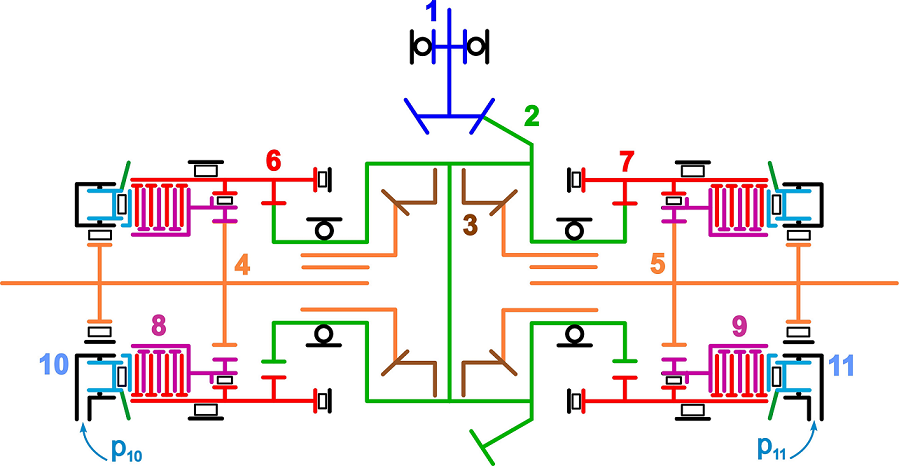The study is devoted to the issues of mathematical modeling and simulating the sport differential mechanism (DM) with controllable torque redistribution. The issue is caused by the elaboration of ADAS systems with the automated torque vectoring for transmissions of all-wheel-drive (AWD) vehicles and the inclusion of such devices in the combined autonomous vehicle trajectory control scheme. At the article's beginning, the use of devices for redistributing traction forces is reasoned by analyzing the curvilinear vehicle motion, where they could ensure the accuracy of vehicle steerability. The literature review highlights modern developments in the field of modeling and researching such DMs. Considering the vehicle turn with a minimum radius, the conditions corresponding to passing greater torque over the outrunning rear axle are determined. All the mechanism's components and loads acting between them are described in detail. To form an original method of mathematical description of the mechanism functioning, the system of differential equations, systems of kinematic and force connections are considered separately. The article details the mathematical approach to generalize the way for automating the equation compilation for rotational mechanical systems such as vehicle transmissions. In the simulation section, a Simulink model reflecting the functional components and calculation procedures is presented. A series of testing and simulations on the DM operation with forcible torque distribution is carried out. Modeling data are presented, and the analysis of simulation results is performed. In the completion, conclusions are made regarding the scope and use of this model and the prospects for further developing the method proposed to automate the formation of equation systems.

